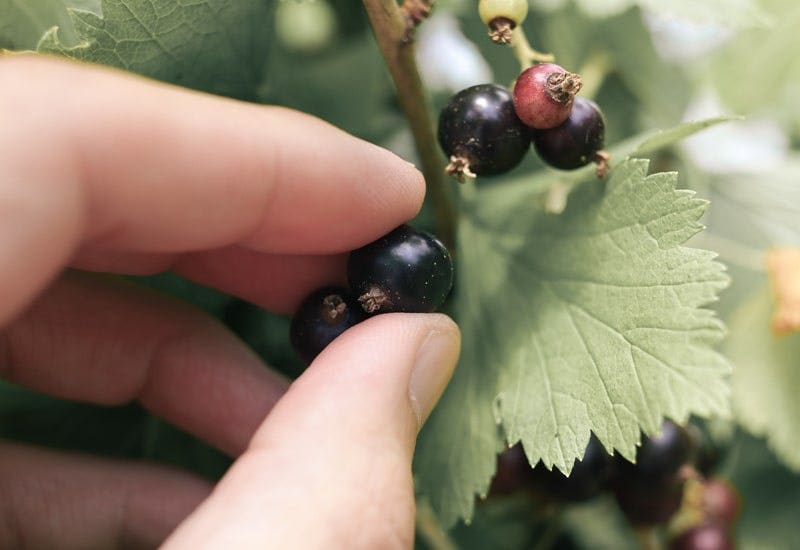Among the best known micronutrients is certainly the vitamin C, or ascorbic acid: it is a substance necessary for the normal growth of cells and tissues, for the correct functioning of the immune system, for the fight against free radicals, for the production of collagen in the skin and also for the absorption of iron. It is a water-soluble vitamin, meaning it can dissolve in water. It cannot accumulate in the body, and must therefore be regularly ingested through the diet.
Let's find out together the ideal needs of this vitamin for each stage of life, which are the richest food sources and how to avoid dangerous deficiencies for the body.
Food sources of vitamin C
Usually we tend to associate vitamin C with citrus fruits, i.e. lemons, oranges, tangerines. In reality, although these fruits are rich in ascorbic acid, there are other foods that have much higher quantities.

If we talk about the amount of vitamin C per 100g of food, the list of foods in the top 10 is as follows:
- Grape and grape juice – 340mg
- Hot peppers – 229 mg
- Ribes – 200mg
- Red and yellow peppers – 166mg
- Parsley – 162mg
- Green peppers – 127mg
- Raw turnip broccoli and rocket – 110mg
- Kiwi – 85mg
- Brussels sprouts and turnip leaves – 81mg
- Strawberries, spinach and clementines – 54mg
But be careful: this precious molecule tends to deteriorate easily during the preparation and cooking of food , because it is a thermolabile and photosensitive vitamin . This means that exposure to too much light and heat risk making the vitamin itself unstable, making it absorb small amounts.
But how much vitamin C?
After seeing where it is possible to find it, let's clarify the recommended quantities for each age group. SINU (Italian Society of Human Nutrition) recommends the daily intake of vitamin C as follows:
- 1-3 years – 35mg
- 4-6 years – 45mg
- 7-10 years – 60mg
- 11-14 year old males – 90mg
- 11-14 year old females – 80mg
- From 15 years and adult males – 105mg
- From 15 years and female adults – 85mg
- Pregnancy – 100mg
- Breastfeeding – 130mg
Needs change according to age and the needs of the different stages of life: this vitamin, always indispensable, is useful for maintaining skin health, to counteract aging and the formation of wrinkles, to prevent seasonal ailments and infections and also participates in many enzymatic reactions of the body (including those necessary for the formation of skin, bones, ligaments, muscles and vascular tissue).
Risk of vitamin C deficiency
Although it is present in many foods, especially of vegetable origin, due to the impoverishment of agricultural land and the prolonged cooking of foods, we can risk not taking sufficient quantities of vitamin C. In adults, the deficiency of this vitamin causes symptoms such as tiredness, weakness, irritability, weight loss, muscle and joint pain.
In the most serious cases of deficiency there is a risk of developing scurvy : a very common disease in the past and characterized by apathy, anemia and inappetence, tooth loss, subcutaneous haemorrhages and poor wound healing. The symptoms of scurvy are all linked to the scarcity of collagen due to the lack of vitamin C : this vitamin is in fact essential for the synthesis of collagen, which fails to form correctly and does not guarantee the integrity of the connective tissues.
Orange juice and vitamin C
To conclude this insight into the most famous vitamin of all, it is worth dwelling on a curiosity related to orange juice. Drinking a glass of juice is in fact generally considered a panacea.  By itself, juice is great, but we often annihilate its Energy without even realizing it. As explained earlier, ascorbic acid is very delicate, and it is easy to "spoil" it with heat and sunlight. So how do you get real benefits from this drink? Just follow a few clever rules:
By itself, juice is great, but we often annihilate its Energy without even realizing it. As explained earlier, ascorbic acid is very delicate, and it is easy to "spoil" it with heat and sunlight. So how do you get real benefits from this drink? Just follow a few clever rules:
- Drink your juice immediately after making it . Vitamin C is highly volatile and the more time passes the more its presence is reduced.
- Do not combine juice and coffee : although this combo is quite fashionable, it is good to remember that caffeine inhibits the absorption of some vitamins, including A and C. The effect is obviously not immediate, but if we risk vitamin deficiencies it is good to distance the intake of these two drinks over time.
Endowed with very important properties, which we have already covered in detail in this article, vitamin C is a molecule that must never be lacking in our daily diet, very important in all seasons and for multiple mechanisms of the human body.
Scientific references
Pullar JM, Carr AC, Vissers MCM. The Roles of Vitamin C in Skin Health. Nutrients. 2017 Aug 12;9(8):866. doi: 10.3390/nu9080866. PMID: 28805671; PMCID: PMC5579659.
Li Y, Schellhorn HE. New developments and novel therapeutic perspectives for vitamin C. J Nutr. 2007 Oct;137(10):2171-84. doi: 10.1093/jn/137.10.2171. PMID: 17884994.
Carr AC, Frei B. Toward a new recommended dietary allowance for vitamin C based on antioxidant and health effects in humans. Am J Clin Nutr. 1999 Jun;69(6):1086-107. doi: 10.1093/ajcn/69.6.1086. PMID: 10357726.
Jacob RA, Sotoudeh G. Vitamin C function and status in chronic disease. Nutr Clin Care. 2002 Mar-Apr;5(2):66-74. doi: 10.1046/j.1523-5408.2002.00005.x. PMID: 12134712.
Weinstein M, Babyn P, Zlotkin S. An orange a day keeps the doctor away: scurvy in the year 2000. Pediatrics. 2001 Sep;108(3):E55. doi: 10.1542/peds.108.3.e55. PMID: 11533373.
Institute of Medicine. Food and Nutrition Board. Dietary Reference Intakes for Vitamin C, Vitamin E, Selenium, and Carotenoids. Washington, DC: National Academy Press, 2000.
Padayatty SJ, Sun H, Wang Y, Riordan HD, Hewitt SM, Katz A, Wesley RA, Levine M. Vitamin C pharmacokinetics: implications for oral and intravenous use. Ann Intern Med. 2004 Apr 6;140(7):533-7. doi: 10.7326/0003-4819-140-7-200404060-00010. PMID: 15068981.



Comments
Write a comment about the article